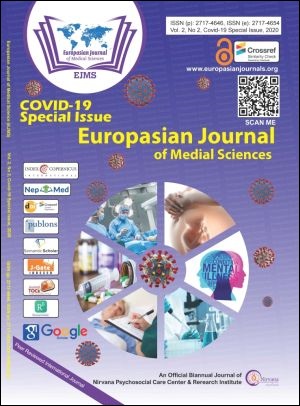Cardiovascular Co-morbidity in COVID-19 Pandemic
Keywords:
Coronavirus Disease 2019, Myocardial injury, Myocarditis, Heart failure, Arrhythmia, COVID-19, Comorbidity, PandemicAbstract
At present, we are in the middle of a global pandemic due to COVID 19 disease caused by SARS-CoV-2 viral infection. It has now spread virtually to every corner of the globe. Medical professionals are faced with the challenge of managing diverse clinical manifestations and multisystem involvement of this infection. Although the respiratory system is mainly involved in COVID-19 disease, there have been diverse manifestations within the cardiovascular (CV) system that pose unique therapeutic challenges. Clinically, a patient may have features of myocarditis, heart failure, acute myocardial infarction, arrhythmia, and vascular thrombosis. Of these manifestations, the most common mechanism implicated is direct myocardial injury, whereas systemic inflammation, oxygen supply-demand mismatch, plaque rupture have also been suggested. Furthermore, currently available data suggest cardiovascular-related manifestations lead to increased morbidity and mortality. Also, patients with underlying cardiac conditions are more prone to severe disease and death. Although there are limited treatment options available for COVID-19 currently, it is imperative that the potential cardiovascular implications of these therapies are to be considered in these patients. There is a need to review currently available information regarding the implication of cardiovascular co-morbidity in COVID-19 disease so that we have an up-to-date and better understanding of this global problem. This review highlights the manifestations, pathophysiological mechanisms for cardiovascular manifestations of COVID-19 and addresses specific concerns of cardiac patients regarding medications and further management.
Downloads
Downloads
Published
How to Cite
Issue
Section
License
Copyright (c) 2020 Rikesh Tamrakar

This work is licensed under a Creative Commons Attribution 4.0 International License.
The author(s) retain the ownership of the copyrights for their work published in EJMS without any restrictions. Upon submission, the author(s) grants EJMS a license to publish, including to display, store, copy, and reuse the published content.
License to Publish
By submitting a manuscript to EJMS, the author(s) grant the journal a non-exclusive license to:
- Publish and distribute the content in all formats, media, and platforms (both existing and future), while identifying EJMS as the original publisher.
- Reproduce, display, and store the content in both print and online formats, including institutional and digital repositories.
- Translate, adapt, and summarize the work, including reprints, extracts, and abstracts.
- Develop derivative works based on the original content.
- Include the work in electronic databases and provide links to third-party materials.
Creative Commons Licensing
In addition to EJMS’s publishing rights, authors grant third parties the right to use, share, and distribute their work under the Creative Commons Attribution 4.0 (CC BY 4.0) International License. This allows unrestricted use of the content, provided proper attribution is given to the original author(s) and the journal.

